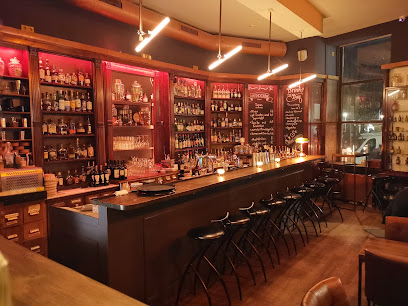
Balanceakt: A Symbol of Freedom in Berlin
A powerful symbol of German reunification and the enduring pursuit of freedom, Balanceakt is a must-see sculpture in the heart of Berlin.
Balanceakt, a striking sculpture by Stephan Balkenhol, stands proudly in front of the Axel Springer building in Berlin. Unveiled in 2009 to commemorate the 50th anniversary of the building's foundation and the 20th anniversary of the fall of the Berlin Wall, it features a bronze figure balancing atop a section of the Berlin Wall. The sculpture serves as a powerful reminder of Germany's division and reunification, embodying the delicate balance between freedom and responsibility. Its presence sparks reflection on the past while inspiring hope for the future, making it a compelling landmark for visitors exploring Berlin's rich history and contemporary art scene. The sculpture is a popular spot for photographs and contemplation, easily accessible and free to view, offering a unique artistic experience in the heart of the city.
A brief summary to Balanceakt
- vor dem Axel-Springer-Hochhaus, Axel-Springer-Straße 65, Berlin, Friedrichshain-Kreuzberg, 10888, DE
- Visit website
Local tips
- Visit during the day to fully appreciate the sculpture's details and the surrounding historical context.
- Combine your visit with a tour of the nearby Checkpoint Charlie to gain a deeper understanding of Berlin's Cold War history.
- Take a moment to reflect on the sculpture's message of freedom and responsibility in the context of contemporary society.
Getting There
-
Public Transport
From U-Bahn station Spittelmarkt (U2 line), walk approximately 3 minutes north along Axel-Springer-Straße. The sculpture is located directly in front of the Axel Springer building. Several bus lines also stop near Axel-Springer-Straße, including lines 147, 200, 248 and M85. A single ride ticket (Einzelfahrschein) for zones A and B costs €3.50.
-
Taxi/Ride-Share
A taxi or ride-share from a central location like Alexanderplatz will take approximately 10-15 minutes, depending on traffic. The estimated cost is between €12-€18. Ask to be dropped off at Axel-Springer-Straße 65.
-
Driving
If driving, be aware that parking in the immediate area can be limited. The Axel Springer AG parking garage on Zimmerstraße is an option, but availability may vary. Hourly parking rates are approximately €3, with a daily maximum of €24. Street parking is also available, but can be difficult to find.
Discover more about Balanceakt
Iconic landmarks you can’t miss
Berlin Wall Remains
0.0 km
Discover the Berlin Wall Remains, a powerful symbol of division and reunification, where history and art converge in the heart of Berlin.
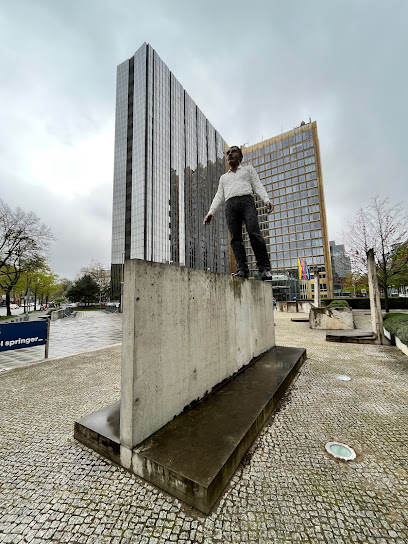
Zimmerstraße
0.4 km
Discover the historic Zimmerstraße in Berlin, where past and present intertwine amidst vibrant culture and captivating landmarks.
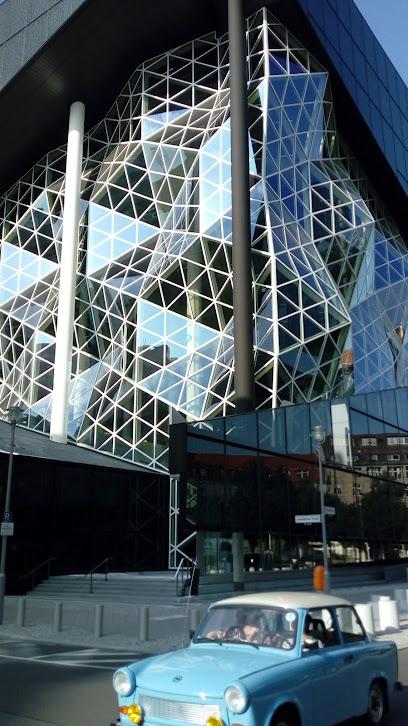
Hausvogteipl. & Mohrenstraße
0.5 km
Discover the dynamic intersection of Hausvogteiplatz & Mohrenstraße in Berlin, where history meets modernity in a vibrant urban setting.
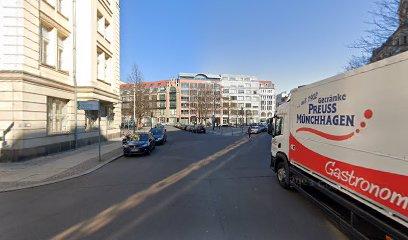
Friedrichstraße 43
0.6 km
Immerse yourself in the architectural beauty and historical significance of Friedrichstraße 43, a must-visit landmark in the heart of Berlin.
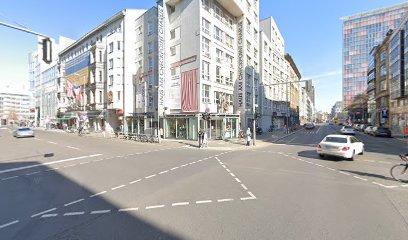
Jungfernbrücke
0.7 km
Explore the historic Jungfernbrücke in Berlin, a stunning architectural marvel that connects the past with stunning views of the Spree River.
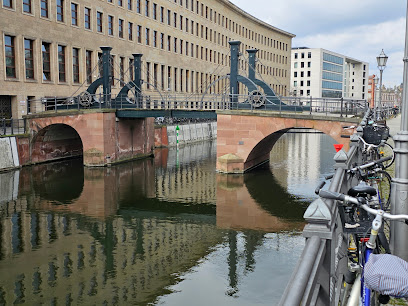
Zimmerstraße 97
0.8 km
Explore the historic Zimmerstraße 97 in Berlin's Mitte district, a symbol of the city's rich cultural heritage and dynamic urban life.
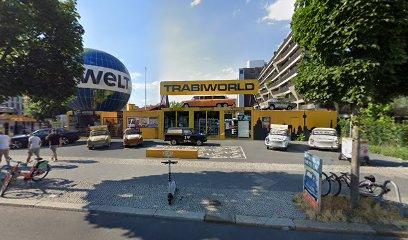
Friedrichswerdersche Church
0.9 km
Discover Berlin's first Neo-Gothic church, a stunning architectural masterpiece by Karl Friedrich Schinkel, now showcasing 19th-century German sculptures in the heart of the city.
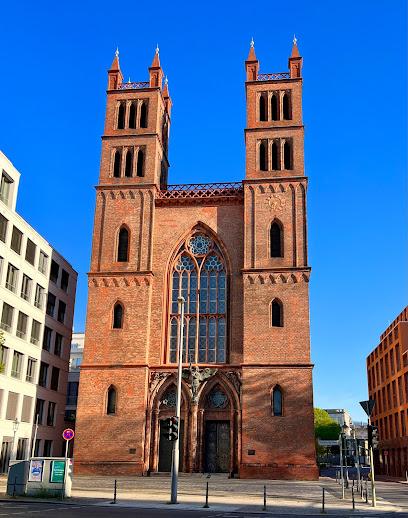
Saint Hedwig's Cathedral
0.9 km
Explore the architectural beauty and historical significance of Saint Hedwig's Cathedral, a neoclassical masterpiece in the heart of Berlin.
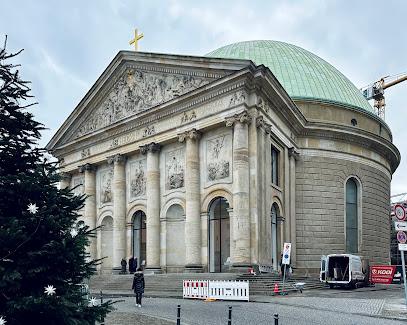
Wilhelmstraße
0.9 km
Explore Wilhelmstraße in Berlin: a historic thoroughfare, once the heart of German power, now a place of remembrance and reflection on the nation's complex past.
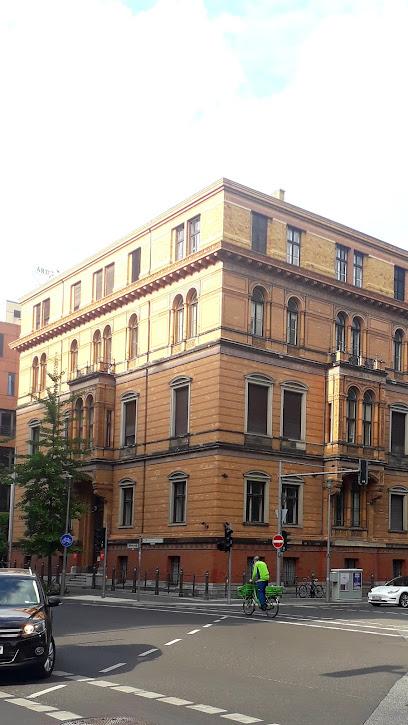
Denkmal für den Völkermord an den Armeniern
0.9 km
Explore the Armenian Genocide Memorial in Berlin – a poignant tribute to history, remembrance, and the enduring spirit of resilience.
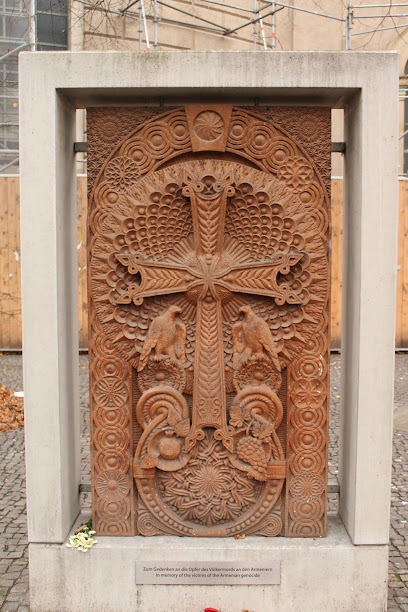
Bebelpl.
0.9 km
Explore Berlin's Bebelplatz: A historic square where architectural grandeur meets poignant remembrance, offering a powerful reflection on culture, freedom, and the lessons of history.

Fischerinsel 3
0.9 km
Explore the architectural beauty of Fischerinsel 3 in Berlin, a captivating blend of history and modernity in the heart of the city.

Schinkelpl.
1.0 km
Explore the beauty of Schinkelplatz in Berlin, where art, history, and nature converge in a picturesque urban setting.

Detlev-Rohwedder-Haus
1.0 km
Explore the Detlev-Rohwedder-Haus in Berlin: A historical landmark that embodies Germany's complex past, from Nazi headquarters to the heart of reunification, offering guided tours and insights.
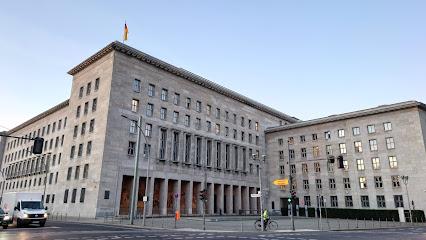
Memorial to May 10, 1933 Nazi Book Burning
1.0 km
Explore a poignant symbol of literary freedom at the Memorial to May 10, 1933 Nazi Book Burning in Berlin, a must-visit for history enthusiasts.

Unmissable attractions to see
Ehemalige Synagoge
0.1 km
Discover the Ehemalige Synagoge, a historical gem in Berlin that embodies the rich Jewish heritage and resilience of the past. A must-visit for history enthusiasts.
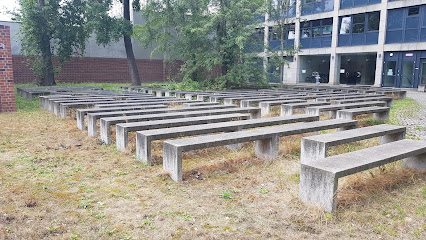
Kohl Bush Gorbachev Monument
0.1 km
A Berlin monument honoring Kohl, Bush, and Gorbachev, key figures in German reunification and the end of the Cold War. A symbol of peace and unity.
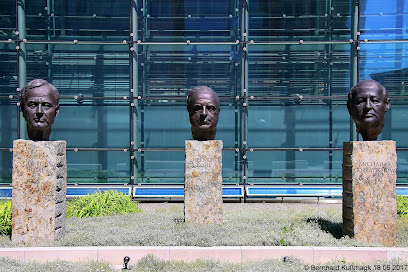
Peter Fechter - Monument
0.4 km
Explore the poignant Peter Fechter Memorial in Berlin, a tribute to the struggles for freedom during the Berlin Wall era, reflecting the city's rich history.
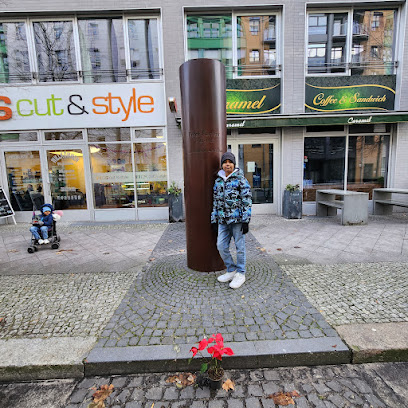
Berlinische Galerie
0.5 km
Explore the Berlinische Galerie, a modern art museum showcasing contemporary art, photography, and architecture in the vibrant heart of Berlin.
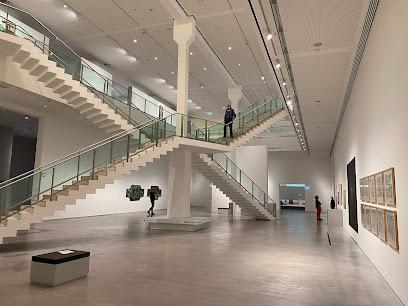
BlackBox Cold War
0.5 km
Discover the intricacies of the Cold War at BlackBox in Berlin, where history comes alive through engaging exhibits and compelling stories.
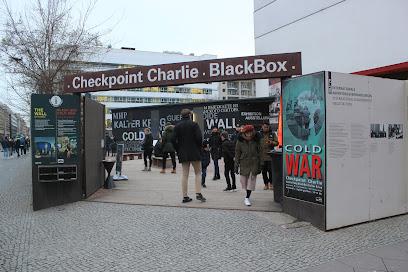
Wall Museum - Checkpoint Charlie
0.5 km
Discover Berlin's history at the Wall Museum - Checkpoint Charlie, a poignant reminder of the city's journey through the Cold War.

Haus am Checkpoint Charlie
0.6 km
Visit Haus am Checkpoint Charlie to uncover the poignant history of the Berlin Wall and the Cold War in a captivating museum experience.
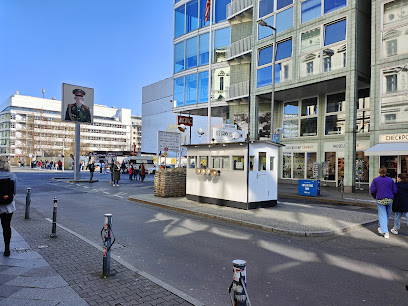
Checkpoint Charlie
0.6 km
Explore Checkpoint Charlie, the iconic symbol of Berlin's Cold War history, offering captivating insights and unforgettable experiences.

Hausvogteiplatz
0.6 km
Discover Hausvogteiplatz, a historic square in Berlin's Mitte district, where rich history meets modern charm in a serene atmosphere.
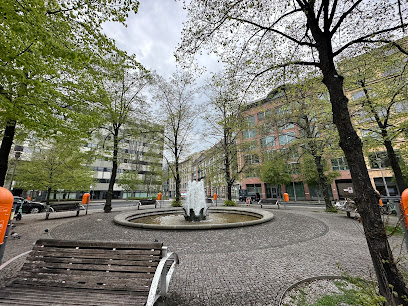
Memorial Fashion Centre Hausvogteiplatz
0.6 km
Explore the Memorial Fashion Centre Hausvogteiplatz in Berlin, a striking sculpture tribute that reflects on history and resilience in the heart of the city.

THE WALL - asisi Panorama
0.6 km
Discover the emotional history of Berlin at The Wall - Asisi Panorama, a captivating museum experience illustrating life during the city's division.

Trabi-Museum
0.7 km
Explore the Trabi-Museum in Berlin, a captivating tribute to the iconic Trabant car and its cultural significance in East Germany.

Neue Kirche
0.7 km
Discover the architectural beauty and cultural significance of the Neue Kirche, a must-visit landmark in Berlin's historic Gendarmenmarkt.

Public Art Houseball
0.7 km
Discover the Public Art Houseball in Berlin's Mitte district - a unique sculpture reflecting the city's vibrant artistic spirit.
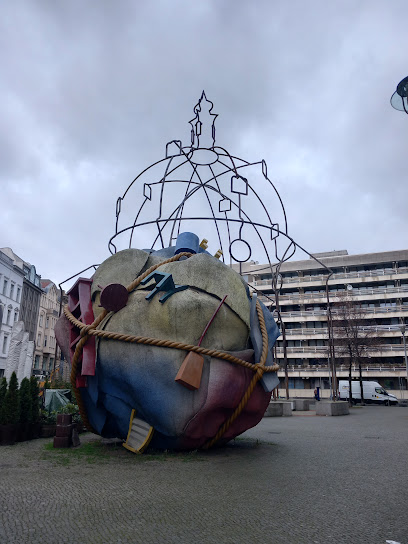
Former Reichsbank building
0.7 km
Explore the Former Reichsbank Building in Berlin, a historical landmark that showcases the city's architectural beauty and rich cultural heritage.
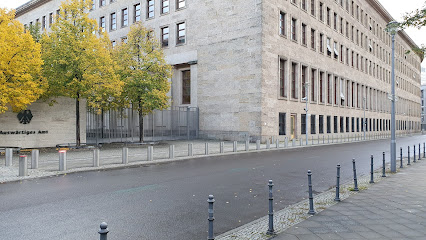
Essential places to dine
Restaurant Tim Raue
0.5 km
Experience culinary mastery at Restaurant Tim Raue - where Asian flavors meet innovative fine dining in Berlin's vibrant heart.

BLESS Restaurant
0.5 km
Experience the vibrant fusion of Vietnamese and Asian cuisine at BLESS Restaurant in Berlin's Mitte district.
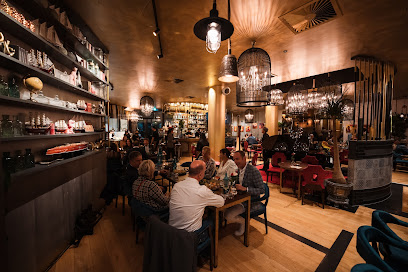
Nobelhart & Schmutzig
0.6 km
Experience exquisite fine dining at Nobelhart & Schmutzig in Berlin - where traditional German cuisine meets innovative culinary artistry.

Johnny's Bar - Karibisches Restaurant
0.7 km
Experience authentic Caribbean flavors at Johnny's Bar in Berlin - where every dish tells a story and every sip transports you to paradise.
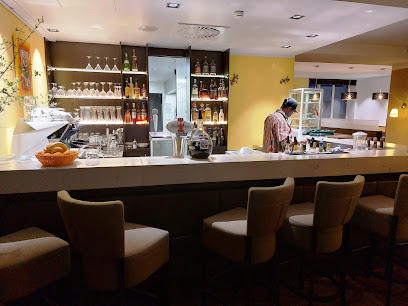
Restaurant Maximilians Berlin
0.7 km
Experience authentic Bavarian cuisine at Restaurant Maximilians in Berlin's Mitte district—where every meal is a celebration of flavor.
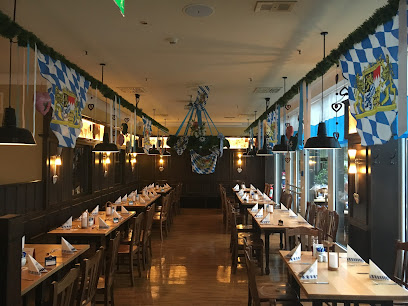
Restaurant FOREIGN AFFAIRS
0.8 km
Discover authentic Austrian cuisine in Berlin's Mitte district at Restaurant FOREIGN AFFAIRS – where tradition meets taste.
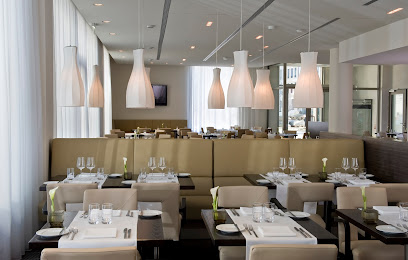
Charlotte & Fritz
1.0 km
Experience the pinnacle of fine dining at Charlotte & Fritz, where exquisite flavors meet elegant ambiance in Berlin's Mitte district.

Restaurant Balthazar 2
1.0 km
Experience fine dining at Restaurant Balthazar in Berlin - where modern cuisine meets exquisite flavors along the Spreeufer.
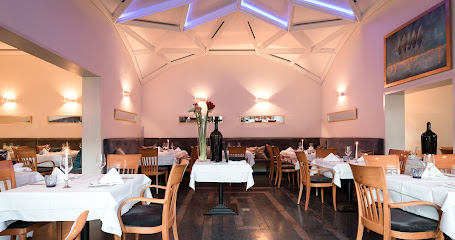
Bocca di Bacco
1.0 km
Experience authentic Italian cuisine at Bocca di Bacco in Berlin – where tradition meets elegance in every dish.
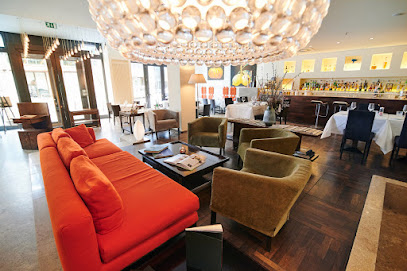
Alt-Berliner Gasthaus Julchen Hoppe
1.1 km
Savor traditional German dishes in the charming ambiance of Alt-Berliner Gasthaus Julchen Hoppe's historic setting.
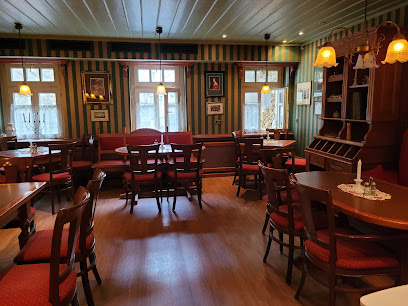
Zur Gerichtslaube
1.1 km
Discover traditional German flavors at Zur Gerichtslaube, a cozy restaurant with a delightful beer garden in the heart of Berlin.
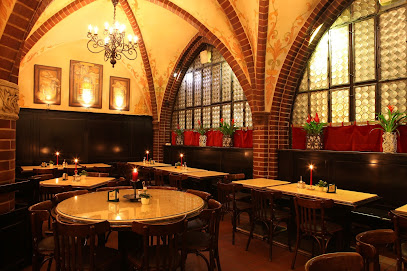
Nante-Eck
1.2 km
Experience authentic German cuisine at Nante-Eck in Berlin’s Mitte district—where tradition meets taste in a cozy atmosphere.

Mutter Hoppe
1.2 km
Experience authentic German cuisine at Mutter Hoppe - a culinary gem nestled in Berlin's vibrant Mitte district.
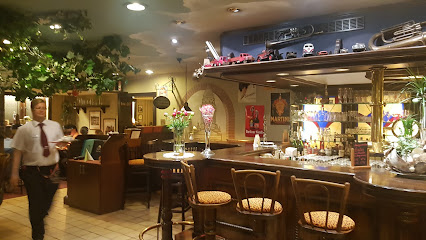
Max und Moritz
1.2 km
Discover Max und Moritz: A culinary gem in Berlin offering authentic German dishes and a cozy atmosphere perfect for all occasions.
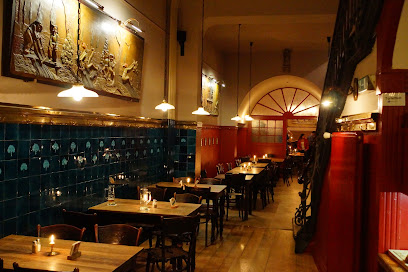
Rutz Zollhaus
1.3 km
Discover Rutz Zollhaus in Berlin: Where Tradition Meets Innovation in German Cuisine
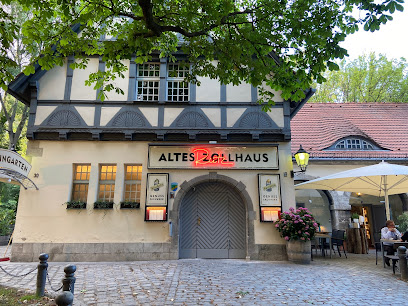
Markets, malls and hidden boutiques
Vielfach Berlin -Das Kreativkaufhaus-
0.7 km
Explore Vielfach Berlin, a unique gift shop and art gallery offering handcrafted souvenirs and local art that capture Berlin's vibrant creative spirit.
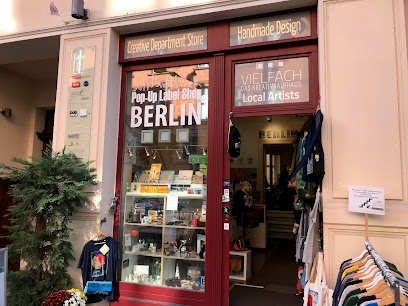
Berlin Loves You
0.9 km
Explore unique souvenirs and local treasures at 'Berlin Loves You', the quintessential store for capturing the spirit of Berlin.
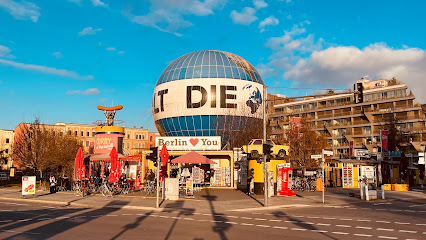
Wolford Boutique Berlin
0.9 km
Experience luxury and elegance at Wolford Boutique Berlin, your go-to destination for exquisite women's fashion and lingerie.
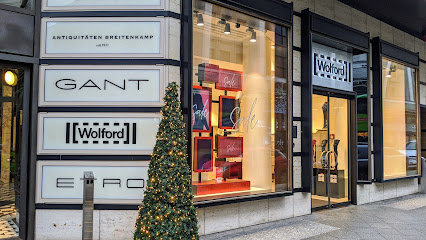
The Square Berlin East
0.9 km
Explore a unique blend of fashion, literature, and home decor at The Square Berlin East, a boutique gem in the heart of Berlin's Mitte district.

Galeries Lafayette
0.9 km
Discover the allure of luxury shopping and gourmet dining at Galeries Lafayette in the heart of Berlin, a must-visit for every traveler.
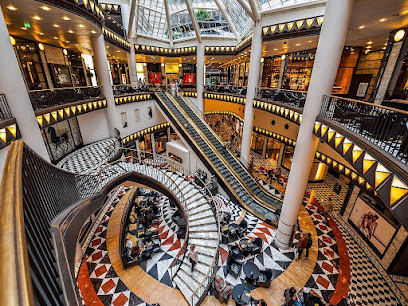
Shop Passage im Humboldt Forum
1.0 km
Explore a captivating selection of gifts and unique souvenirs at Shop Passage im Humboldt Forum, a must-visit destination in Berlin.
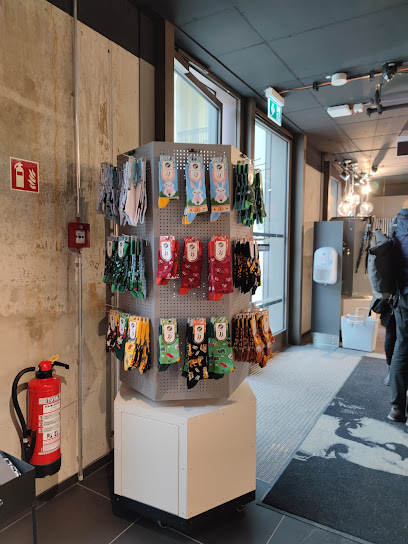
Mall of Berlin
1.2 km
Explore the Mall of Berlin: A shopping haven in the heart of the city with endless retail, dining, and entertainment options.
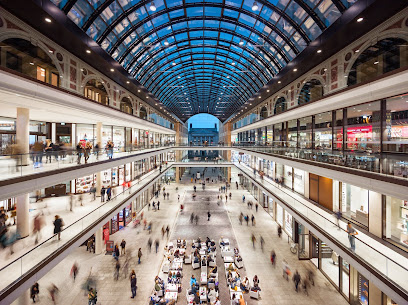
THE CODE
1.2 km
Explore the chic and contemporary fashion scene at The Code, a boutique in Berlin's Mitte district, showcasing unique styles and local designers.
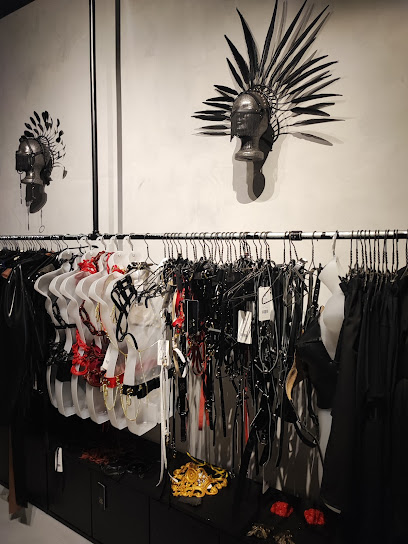
BERLIN STORE
1.3 km
Discover unique souvenirs and local crafts at the Berlin Store, the perfect stop for tourists seeking a piece of the city's vibrant culture.
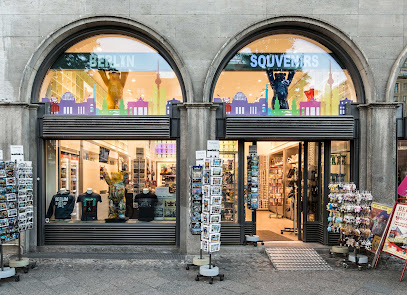
I love Berlin
1.3 km
Explore 'I Love Berlin' for unique souvenirs and gifts that embody the vibrant culture and spirit of Berlin, located in the heart of the city.
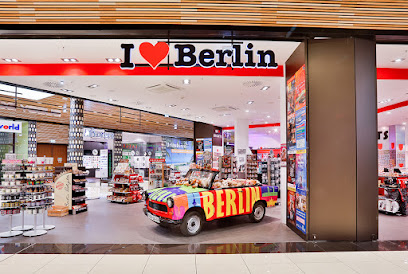
Redbear Berlin
1.4 km
Explore Redbear Berlin, a stylish boutique offering unique fashion pieces in the vibrant Mitte district, perfect for discerning shoppers.

ausberlin
1.6 km
Discover local fashion and unique gifts at ausberlin, a vibrant department store in the heart of Berlin's Mitte district.
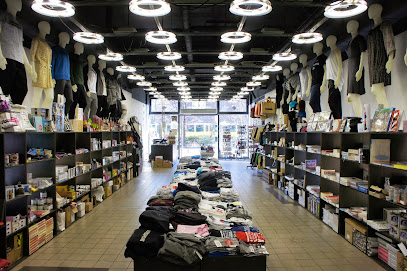
BERLIN Store - MUDDASTADT GmbH
1.7 km
Discover unique gifts and souvenirs at MUDDASTADT GmbH in Berlin - where every item tells a story of the city's rich culture and heritage.

The Playce
1.7 km
Experience shopping bliss at The Playce in Berlin, where high-quality stores meet delightful dining and vibrant entertainment.
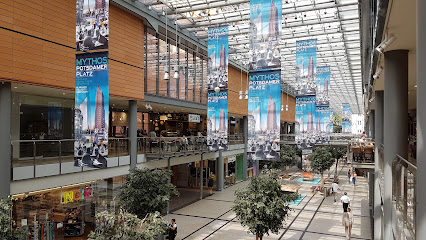
Voo Store
1.7 km
Explore Voo Store, an eclectic blend of fashion and café culture in Berlin's vibrant Friedrichshain-Kreuzberg district.
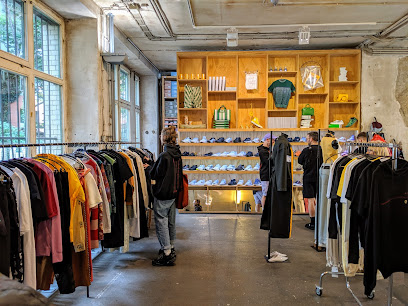
Essential bars & hidden hideouts
Charlie's Beach
0.6 km
Discover the perfect blend of relaxation and excitement at Charlie's Beach, a vibrant bar in Berlin's Mitte district with delightful drinks and a lively atmosphere.
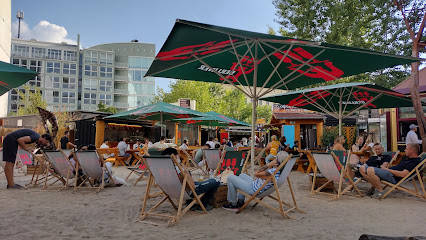
Newton Bar
0.7 km
Experience the vibrant nightlife of Berlin at Newton Bar, where stylish cocktails and a chic atmosphere await in Mitte.
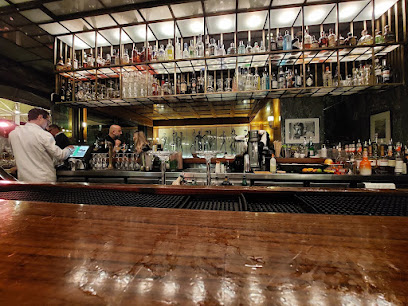
Gittis Bier-Bar
1.3 km
Experience authentic German beer and cuisine at Gittis Bier-Bar in the heart of Berlin's Mitte district.
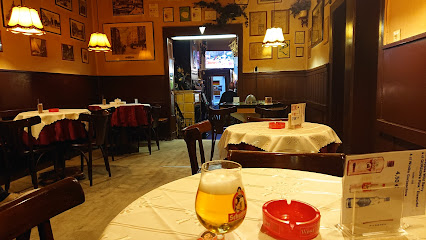
Oranienberger
1.4 km
Experience the vibrant nightlife and culinary delights at Oranienberger, a unique bar and restaurant in Berlin's trendy district.

Windhorst
1.4 km
Experience Berlin's vibrant nightlife at Windhorst, an upscale cocktail bar serving exquisite drinks in a stylish atmosphere in the heart of Mitte.
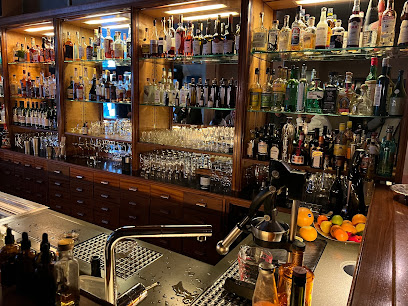
Bar39
1.4 km
Experience the vibrant nightlife of Kreuzberg at Bar39, where innovative cocktails meet a lively atmosphere, perfect for every night out in Berlin.
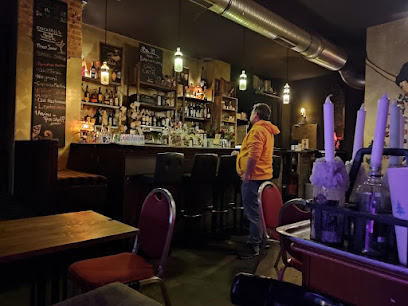
Würgeengel
1.4 km
Experience the vibrant nightlife of Berlin at Würgeengel, a cocktail bar renowned for its creative drinks and lively atmosphere.
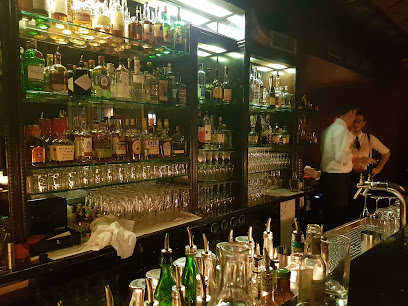
Berlin Icebar
1.5 km
Discover the magic of Berlin Icebar, where cocktails meet ice sculptures for a unique nightlife experience in the heart of the city.
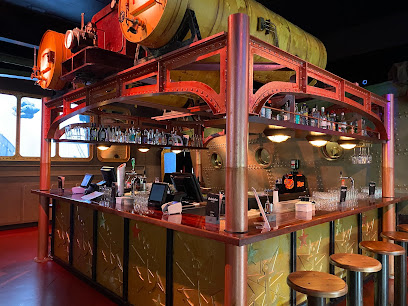
The Curtain Club
1.6 km
Experience elegance at The Curtain Club, Berlin's premier bar with exquisite cocktails and a chic atmosphere in the heart of Potsdamer Platz.
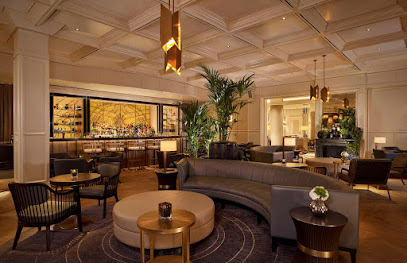
Knutschfleck Berlin
1.6 km
Discover the energy of Knutschfleck Berlin, where live music, delicious food, and dance come together for an unforgettable night out in the heart of the city.
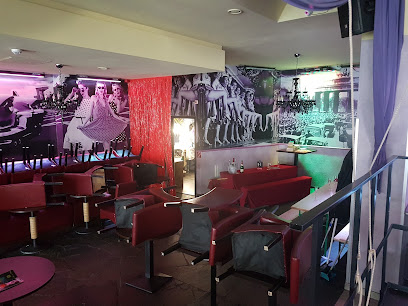
TheCoven Bar
1.6 km
Discover the allure of TheCoven Bar, a cocktail haven in the heart of Berlin's Mitte district, where innovative drinks meet enchanting ambiance.
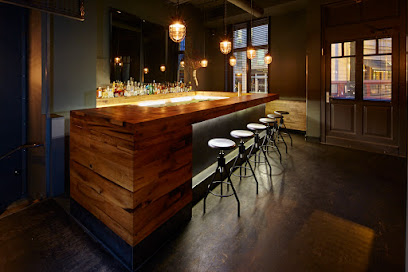
Bierbar Alkopole
1.7 km
Discover the heart of Berlin's nightlife at Bierbar Alkopole, where a wide selection of beers and a friendly atmosphere await.

Posh Bar
1.7 km
Discover the elegance of Posh Bar in Berlin, where expertly crafted cocktails meet a chic atmosphere in the heart of the city's nightlife.
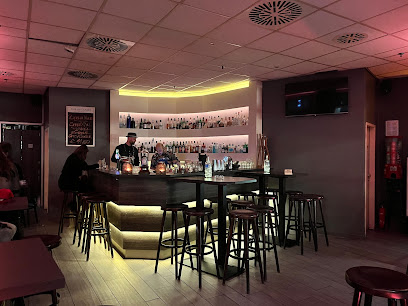
meisterschueler
1.8 km
Discover Meisterschueler in Berlin – a captivating cocktail bar that intertwines art and mixology for an unforgettable experience.
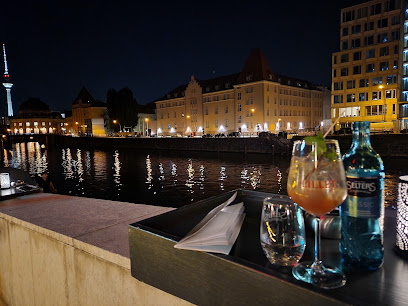
The Pharmacy Bar
1.8 km
Discover The Pharmacy Bar in Berlin: A cocktail lover's paradise with a unique pharmacy twist, offering innovative drinks in a chic lounge atmosphere.
